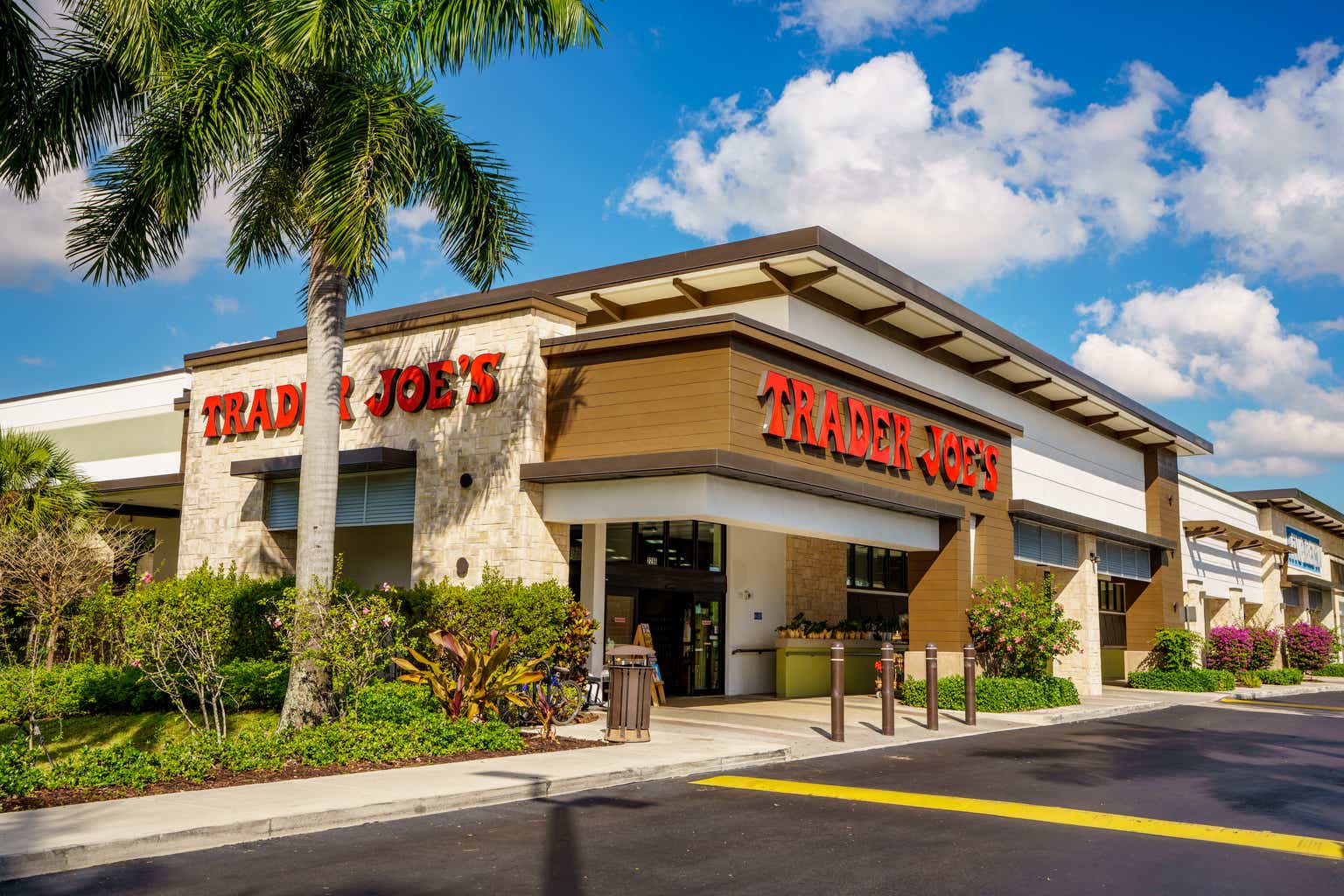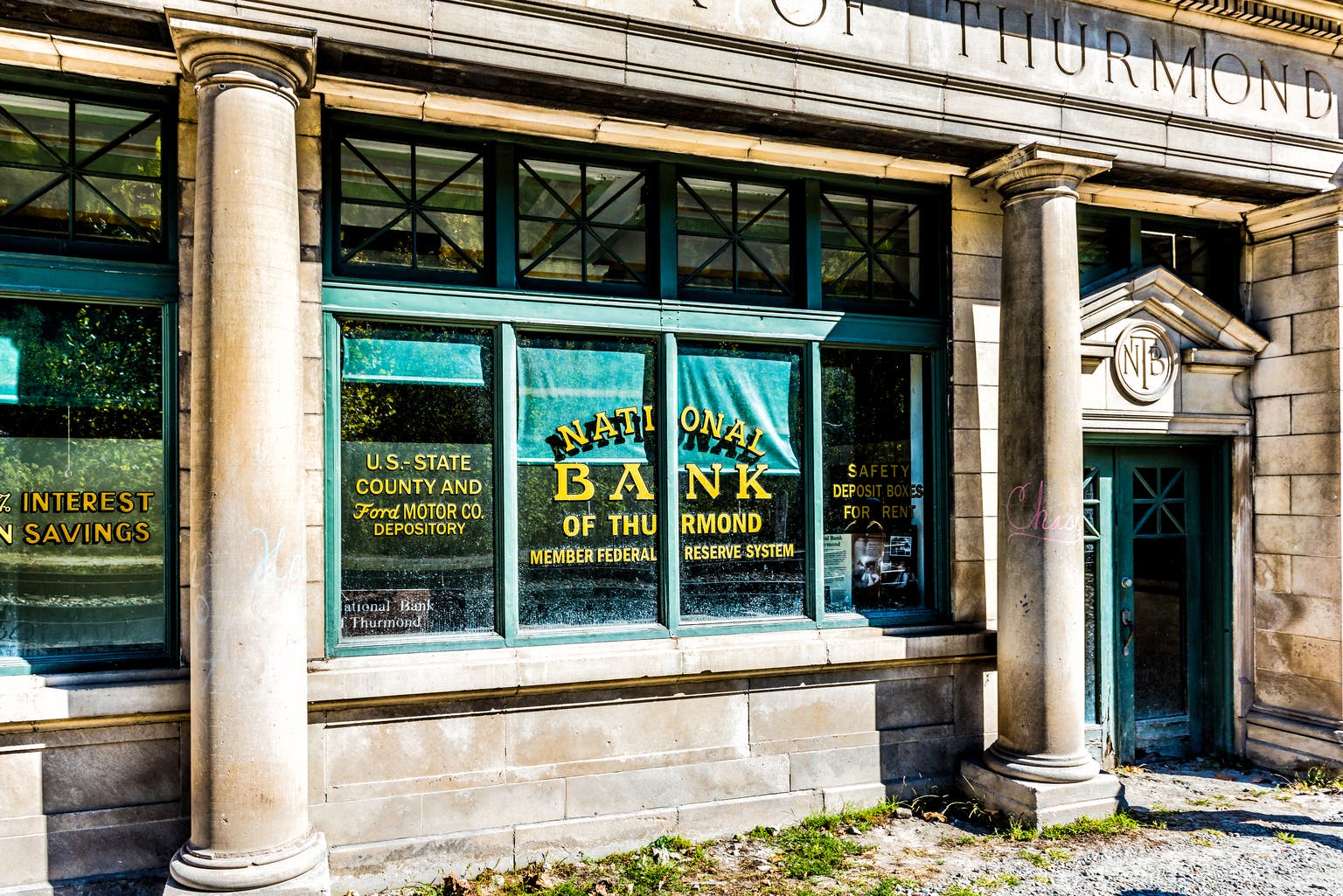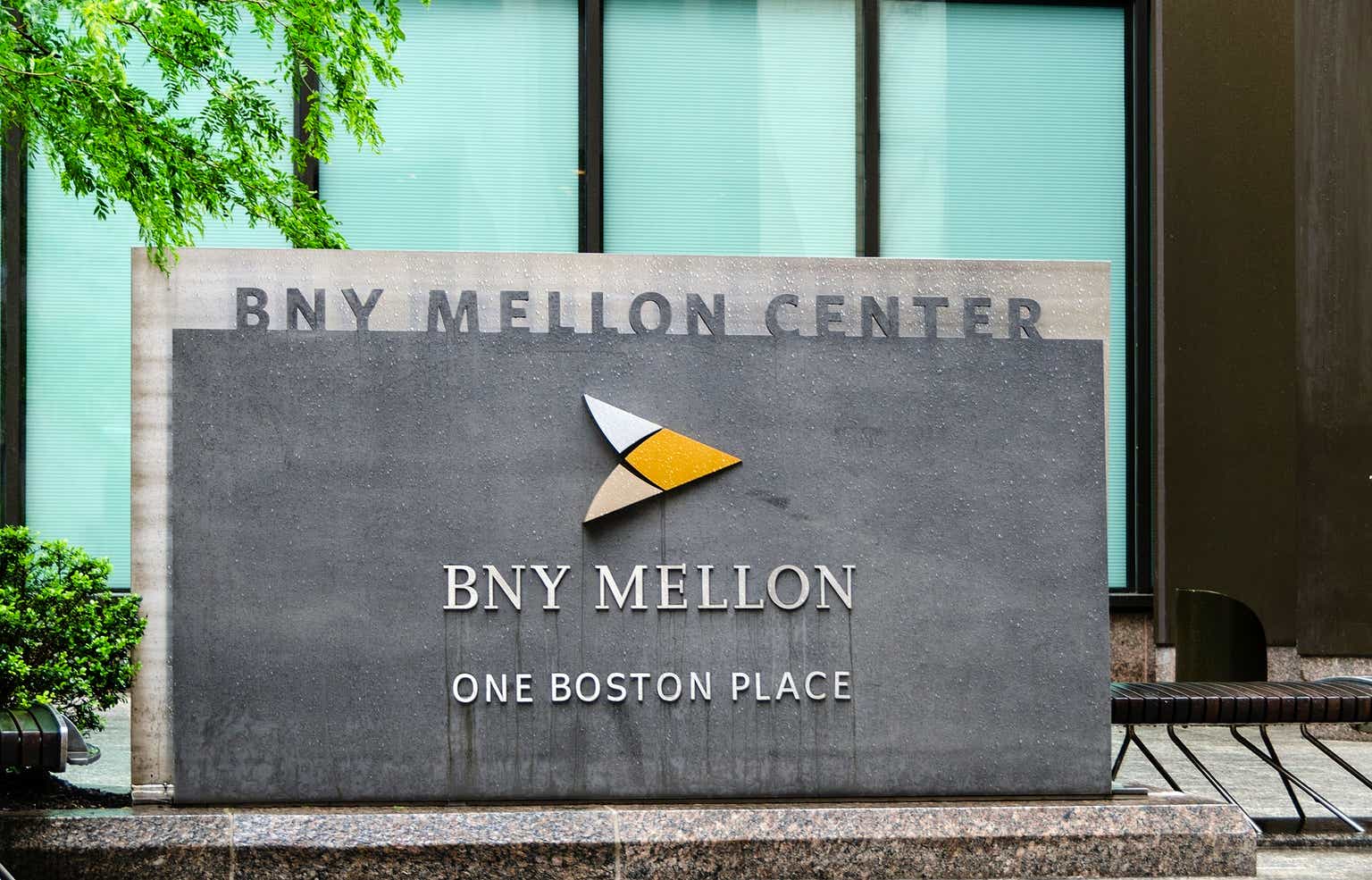Listen here or on the go via Apple Podcasts and Spotify
Brixmor Property Group CEO James Taylor speaks to near term uncertainty and volatility (0:15). The equation starts with rent (3:20). Dividend growth at BRX (6:20). Brixmor’s tenants, a defensive asset class (8:00). Valuation and price (12:00). Stock dilution philosophy (21:00).
Transcript
Rena Sherbill: Jim Taylor, the CEO of Brixmor (NYSE:BRX). It’s great to have you on Investing Experts. Welcome back to Seeking Alpha, Actually. It’s great to talk to you.
James Taylor: And it’s so good to be back, Rena. I hope you’re doing well.
RS: Certainly am. Although trying to stay above water, I suppose, is a nice metaphor to start with as we navigate these somewhat stormy waters sometimes in the marketplace.
I mentioned welcome back to Seeking Alpha. You were on years ago on CEO Interviews also in a somewhat tumultuous time broadly speaking. If you could ground us in this moment, how are you looking at the marketplace? How are you sussing out the economy and everything else you need to navigate as a CEO?
JT: Well, I think you really need to look through the near term uncertainty and the volatility by tweet, as they say, with regulatory uncertainty, and look at what’s happening with your tenants and their businesses.
We’re fortunate to have a rather defensive asset class open air retail anchored by shopping or anchored by grocers with value apparel, fitness, quick service food, etcetera, categories that tend to do well through economic cycles, and it’s a long term business.
Our business at the end of the day is a business of long term leases with credit tenants. So, certainly, we’re focused on the near term volatility, but we’ve really got a business plan that’s built to sustain and grow even with a more volatile market.
RS: And what would you say in terms of we have a Fed meeting coming up in the next month? Are you paying attention to the macro picture, the interest rate conversation, and how should investors be understanding that side of things?
JT: The approach I’ve taken always throughout my career to interest rates is always assume they’re gonna be higher in the future than they are today.
That keeps you out of the dilemma of getting into an asset or an opportunity that is priced word is simply because of interest rates.
It really makes you focus as a steward of capital on what is the growth profile of what you’re investing in. For us in retail real estate, it’s what are the in place rents like versus the rents that you could derive from better tenants. And so, obviously, we’ve built a balance sheet with tremendous liquidity, very low levered.
We’re five and a half times debt to EBITDA. And as I like to say, we’re under EBITDA as we harvest the mark to market opportunity that exists in our portfolio.
I think the Fed’s doing a good job. I think their mandate is particularly difficult in this environment, given that regulatory uncertainty. And so as a fiduciary of capital, as a steward of capital, I continue with that assumption that rates will be higher in the future than where they are today.
RS: You mentioned some metrics just now. What would you say are the metrics that you’re most focused on, most aware of in your day to day, and then also what you keep in mind kind of long term picture?
JT:I mean, the the equation starts with rent. Right? Where is your in place rent relative to the rent that you could achieve? What is the productivity of the underlying tenant, which helps you assess the rent that they’re able to pay? What does the traffic look like at your center?
And all of that really drives what is your organic growth of your or your same store NOI, which, of course, drives your bottom line profitability and ultimately your dividend. So it begins with rent.
We’re really focused from a strategic standpoint on a value added strategy where we find opportunities to bring in better tenants at better rents, enjoy not only a great return on the leases that we’re signing, but follow on benefit in terms of occupancy and rate with the tenants that we bring in.
So let me give you an example. Let me break it down a little bit. We might have had an old Kmart box that was driving no traffic to a shopping center and not supporting the local small shops that are part of that shopping center.
Bringing in a Sprouts (SFM) or a Whole Foods to replace the old Kmart box not only brings you a better tenant at a better rent, it helps the balance of the tenants and really helps drive not only traffic, but rents where those tenants are able to be profitable.
So at the end of the day, it’s pretty simple, steady business, but that focus on abr and importantly, where you believe abr is going is most critical.
RS: What do you think investors get wrong about the REIT space in general? Do you think that it’s a metric that they get wrong? Do you think it’s contextually how they’re looking at it in the space? Do you think it’s more dependent on the tenants that a REIT has that should be most focused on in terms of when when investors are looking at the REIT space?
JT: Yeah. I think sometimes folks conflate all forms of of commercial real estate. And as we know, office is very different than enclosed malls, which is very different than open air shopping centers or hotels or etcetera.
What I like about open air shopping centers in particular is you think about how should real estate fit in the portfolio. It’s a good current yield with great visibility on growth.
The sector typically grows at two to 3%. We happen to have a business plan and a proven model of delivering close to 4% growth year in and year out with a dividend that’s extraordinarily well covered.
So I think the mistake many people make when they think about REITs is to lump all the property types into one single category without looking at what the underlying fundamentals are of that particular asset class.
RS: So maybe talk to us a little bit more about the dividend. If you go on Seeking Alpha and look at the dividend grades we have for Brixmor, you’ll see that growth is the highest scored.
What would you say about the growth vis a vis the other metrics that people are looking at when it comes to dividends, be it yield, be it consistency?
And also, how much are you paying attention to, let’s say, noise for lack of a better term, but outside factors, when it comes to the dividend?
JT: Well, ultimately, when you buy a share of Bricksmoor, you’re buying a dividend with an expectation that it’ll continue to grow. And as you highlight, we’ve been very successful executing our strategy, growing our dividend.
We’ve done so at moderate risk. We have a very conservatively leveraged balance sheet. And importantly, we maintain one of the lowest payout ratios in the space of 52% of FFO.
What that means is as we continue to drive growth through our strategy of bringing in better tenants of better rents into these well located shopping centers, we drive growth in cash flow and FFO, and in particular, growth in that dividend, which we typically maintain at the minimum taxable payout ratio.
That allows us to retain liquidity to reinvest in the business while same time putting us in a position to grow that dividend over time.
RS: There’s a lot of questions valid, I would say, about the the retail picture these days. How are you thinking about the tenants that you have and also how you think about the near term and long term? What trends have you most concerned in the back of your mind?
JT: Our tenants as a whole are rather defensive and resilient. We’re one of the largest landlords to Kroger (KR) and Publix on the mainline grocery side.
We’re also a significant landlord to TJ, Trader Joe’s, Aldi, or Sprouts on the specialty grocery side. We’re also a large landlord to the likes of Ross (ROST), TJ (TJX), Burlington (BURL) on the value apparel side. And, our tenants provide daily needs and services to the communities they serve that tend to be pretty resilient through economic cycles.
One of the things that we’ve been watching really closely as we’re going through this turbulence is what’s happening with the tenant store expansion plans. And those have remained very much intact as the tenants are focused on the store being one of the most profitable channels of reaching the customer.
Rena, you’ll remember there was a lot of narrative about bricks and mortar being dead that it was all moving to online. And what the pandemic in the last several years have proven is that the store is a necessary and vital channel for the retailers to connect with the customer.
So they remain focused on those locations and centers where they believe they can serve their customer well and do so profitably. The demand that we’re seeing from retailers is very rational.
It’s based on utilization of a lot of traffic data and other sources of information to estimate how productive that particular location will be.
And, the tenant, at the end of the day, needs to be profitable on a four wall EBITDA basis. So that demand that we see, which remains very strong, is not speculative. It’s really in form demand and based on the experience of the retailers over the last several years.
RS: Do you look at other REITs as competition? Are you looking at other REITs that have maybe similar tenants to see what’s going on? Or do you not necessarily look at other REITs as certainly for investors to be looking at a peer group, they can look at a group of REITs.
But do you look at it that way? Or how do you view what what else is coming down the pike? Is it from competitors? Is it broadly speaking? Is it more macro wise? Is it keeping an eye on the tenants and how that’s going?
JT: One thing to appreciate is that while we compete with the other public public shopping center companies for capital, we really don’t compete together at the asset level because collectively, the public shopping center REITs own about 10 to 12% of the institutional quality open air shopping center, portfolio in the country.
So what that means is a platform like ours with over 360 shopping centers and really proven and vital relationships with tenants that are growing today like Publix, like TJ Maxx, like Sprouts.
That market share is really something that redounds to our benefit as we execute a strategy that competes not so much with other public companies, but with private landlords.
And that coverage that we have and that frequency of dialogue is a real competitive advantage As we understand where these retailers wanna allocate capital, we understand where they have voids for new stores.
We’re not relying on third party brokers to give us that information. We get it directly from the retailers themselves.
So as you think about the competitive landscape at the real estate level, it’s still very disaggregated and, frankly, is a tremendous opportunity for well integrated, well resourced platforms like ours to execute value added strategies.
RS: Can you speak to the valuation at all? We have if if people are looking at the quote page for Brixmor, you’ll see that it’s a buy both from Seeking Alpha analysts and from Wall Street.
I’m curious if there’s a way to have a conversation about the valuation and how you think about the price and and how much further upside it may have to go or maybe markers along the way that you pay attention to that affect that conversation.
JT: I think that our share price is obviously very attractive where it is today. I think for an investor, it provides a four and a half percent dividend yield, importantly, with great visibility on growth and a track record of outperformance.
So as I think about the elements of your total return, I think there’s an opportunity for us to continue to expand our valuation as we deliver that growth.
At the same time, the shareholders get the benefit of a well covered dividend and a strong balance sheet.
So through volatility, I think it’s an investment that continues to perform well. It’s performed well over the last one, three, and five years as we’ve executed this strategy.
And importantly, we have tremendous visibility on the quarters ahead as we talk a lot about on our earnings call with the sign but not commence pipeline, which are contractual lease commitments from our tenants to open up stores in our portfolio that approximates about 6% of our total revenue.
So that gives you visibility on that growth not only in ’25, but ’26 and beyond as we stack those rent commencements each and every quarter.
So I think when you think about valuation as an investor, think about the components of that return. It’s a very well covered dividend and attractive current return of four and a half percent that importantly, we expect to grow at better than 4%. So that we think is a relatively compelling investment opportunity.
RS: Speaking to the earnings calls that you have into the coming quarters and coming years, something that we’ve been noting on some of the podcasts has been looking at earnings calls to gain more insight into the tariff conversation.
Now we know that it’s somewhat ever changing in terms of what tariffs and how much and with what countries. But how are you most, or I would say what is involved in the tariff conversation, and what do you think investors should be looking for?
I assume you’re hearing from shareholders about the tariff conversation. What kind of questions are are they asking?
JT: Well, they’re asking two things. They’re asking, what is the impact on the underlying tenancy? And as I highlighted before, our core tenants are very resilient.
We have 81% of our portfolios grocery anchored. The grocers tend to do well with moderate inflation. And another key category for us are the off price retailers, Ross, TJ Maxx, HomeGoods, HomeSense, Burlington.
They also capitalize on periods of inventory disruption. There are certainly some tenants in certain categories that may be bearing outsized risk of tariffs, and we stay very close with them.
But one of the interesting things is that the tenants that are thriving today have been dealing with tariffs for some time and have built resilient sourcing strategies to make sure that they’ve got inventory and product on hand for the customer.
And lastly, the thing that we look at, which is a leading indicator, is what is going on with our commitment to new store openings.
And we’ve seen that continue to grow unabated from retailers like the ones that I mentioned, retailers that we continue to grow with, and importantly, retailers who are relevant to the customers that our centers serve.
RS: So when you talk about retailers like Ross being prepared for the tariff effects, customers won’t see on lower price items such as Ross offers and some of the other tenants that you have, they won’t they won’t be spreading higher prices? Even though it’s lower cost than other places, they won’t be spreading higher prices by and large to consumers? You’re not feeling that that will be in effect for them?
JT: I just think they’re well positioned to deal with the volatility and pricing. Why? Because they offer a compelling value. They offer quality at a good price. And to me, that wins throughout economic cycles and inflation and etcetera.
There’s another element of their business plan, which is sourcing inventory over supplier, undersold inventory from full price retailers who are gonna be dealing with more volatility in this environment because of the tariffs.
So I think the market recognizes that these retailers are particularly well positioned to weather volatility.
RS: Anything that you’re particularly paying attention to when it comes to earnings calls? It doesn’t even necessarily have to be in the sector. But broadly speaking, is there anything that you are currently paying attention to or generally pay attention to?
JT: Obviously, we’re very focused on the calls of our key tenants, and we’re encouraged by the growth that they’re reporting.
And, more broadly, you’re obviously interested in what’s happening with the consumer, what’s happening to their wallet, and the companies that obviously come to mind are companies like Walmart (WMT) and other great retailers who serve the customer.
Beyond that, as it relates to our business, we’re always focused on cost inputs and inflation, but we are positioned in such a way that we can realize still good incremental returns on the capital that we’re putting to work based on a fundamental truth within our industry, which is there’s been no new supply of shopping centers over the last ten plus years of any significance.
And you’ve had continued strength of demand from retailers. So that supply demand picture remains very healthy, and it’s part of what’s driving the continued performance, not just for Brixmor, but for shopping center owners generally.
RS: You’ve you’ve been in at the helm for for a bit of time. I’m curious what’s been the most surprising thing about being CEO of Brixmor and generally being in the retail real estate space?
JT: It’s durability and the continued growth and the importance of an accretive reinvestment strategy that drives that growth. I’m proud of the fact that when we started, nearly nine years ago, the average in place ABR for this portfolio was $12 a foot. Today, it’s over 18.
But importantly, where we were signing new leases eight, nine years ago in the mid to upper teens, we’re signing those deals today in the mid twenties. So it gives you a tremendous amount of confidence and visibility in the quarters and years ahead that we can continue to successfully capitalize on the accretive reinvestments we’re making in the portfolio, drive growth, and drive importantly value and follow on growth and occupancy and rate.
So I can’t say that I’ve been surprised, but when we started nine years ago, we laid out what our strategy was to investors. And we said, be patient. It’s gonna take about a year to twenty four months for this strategy to really begin bearing fruit, and it has.
And I think if there’s anything that has been a positive surprise to me is the flywheel effect of that accretive reinvestment in terms of the occupancy and rate for small shops in the shopping centers and how they performed.
It shows up in every one of our metrics, Rena. It shows up in our new leasing spreads. It shows up in our ABR per foot, as I mentioned. It shows up in our renewal spreads, which are mid double digit. It shows up in our NOI growth, which leads the sector. And importantly, as you highlighted earlier, it shows up in the growth we’re able to deliver in our dividend.
So I wouldn’t say completely surprised, but pleasantly surprised by the progress and the momentum that a several year focused and disciplined strategy has resulted in and one that we’re honestly quite proud of.
RS: And how would you say, broadly speaking and also as it pertains to bricks more if you’d care to, but I’m curious as a C suite executive, how you generally think about stock dilution and what you see from the marketplace that either shores up your strategy or has changed your opinion in some way?
JT: And a conservative balance sheet is a critical part of our strategy. When we joined, our leverage was over seven and a half times debt to EBITDA. Today, it sits down at five and a half times.
And importantly, we are in a position where we don’t need to access capital at any particular point in time because equity is precious.
One of the things that I like about our all weather business plan is that our reinvestment program is funded on a deleveraging basis with free cash flow where we’re able to reinvest a hundred and 50 to 200,000,000 annually into the portfolio.
As I mentioned, bringing in better tenants and better rents and importantly driving great growth and ROI. And that’s all self funded.
That provides an additional 50 to 200 basis points of unlevered growth, which is why if you look at our shareholder materials, you’ll see our growth model and our outlook is for 4% same store growth, occupancy neutral over the next several years.
So that’s pretty compelling and something that we’re proud of.
RS: Well, Jim, I appreciate the conversation. I’m happy for you to leave a last thought or last word on if you think that we left something out of this conversation as it relates to bricks more or the sector in general.
Also happy for you to share with listeners how they can find out more about Brixmor or get in touch with you perhaps.
JT: We we have a website, brixmor.com. On our website is our investor materials. I would invite investors to study more on the company and really dig into our strategy, which has produced significant value consistently over time and importantly continues to grow the dividend, which I think is an important component for the average investor.
And, certainly, we’re available for questions. Stacy Slater runs our IR group and is always meeting and speaking with investors to answer questions.
Read the full article here











